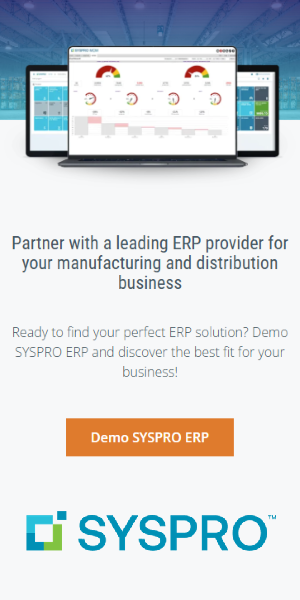A new report on ERP technologies and adoption in the manufacturing and distribution space from SYSPRO, reveals a strong appetite for smart manufacturing technologies such as AI, automation, and IIOT. However, deployment challenges remain a significant hurdle for many manufacturers.
The research, which consolidates insights from multiple surveys, indicates that manufacturers are increasingly overcoming barriers such as high upfront costs and resistance to change. According to the findings, 37% of manufacturers are adopting automation and robotics, while AI and machine learning (19%) and IIOT (18%) are also gaining traction.
AI at the Core
AI and automation are the top digital transformation priorities with 40% of the respondents surveyed listing it as a crucial factor. This is followed by digital integration and real-time insights (29%) and cost management while adopting new technologies (24%).
AI remains a key focus, with 80% of manufacturers either allocating resources for implementation or planning to do so soon. While only 12% have deployed AI, nearly 57% are actively researching use cases, and another 11% plan to roll out AI solutions within the next year.
“Manufacturers clearly see smart technology as the key to overcoming workforce shortages and supply chain disruptions. However, adoption is still challenging,” said Kelly Kucera, Senior Vice President of Global Marketing at SYSPRO Americas.
Barriers and Challenges
While manufacturers in the US are making strides in smart technology adoption, they lag behind their Chinese counterparts, where 45% have already implemented these innovations. This signals a competitive gap that American manufacturers will need to bridge, SYSPRO indicates in its report.
Integration remains a major challenge for manufacturers globally, with 30% of manufacturers citing difficulties with it as a major roadblock. Additionally, 15% struggle with outdated systems and another 15% with limited scalability. Real-time data access also remains an issue, with 40% of leaders reporting difficulty in obtaining timely insights.
Workforce challenges remain a top concern, with 30% of manufacturers citing difficulties in attracting and retaining skilled workers. Supply chain disruptions (23%) and cybersecurity risks (12%) also rank high on the list of obstacles.
“SYSPRO’s ERP solutions are designed to simplify this transition, providing the flexibility and integration needed for real-world manufacturing environments,” Kucera said.
What This Means for ERP Insiders
AI and automation drive ERP implementation for manufacturers. With 40% of manufacturers in the report prioritizing AI and automation, ERP systems must integrate advanced analytics and AI capabilities to enhance operational efficiency. For example, SYSPRO’s ERP solutions offer AI-driven demand forecasting to optimize inventory management, automated workflows that reduce manual processing times, and predictive maintenance powered by machine learning to minimize equipment downtime.
Real-time data challenges require ERP solutions. As manufacturers struggle with real-time data access, ERP platforms must provide enhanced data visualization, predictive analytics, and integration with IIOT for improved decision-making. Features that an ERP can provide to assist with this task include real-time production monitoring dashboards, AI-driven supply chain analytics to anticipate disruptions, and automated compliance reporting to streamline regulatory requirements.
ERP solutions can bridge the labor gap by streamlining workflows. Given that 30% of manufacturers struggle with skilled labor shortages, utilizing an ERP system that automates repetitive tasks and provides training insights through AI-driven tools becomes crucial for manufacturers. ERP systems like the one provided by SYSPRO also closes the talent gap by supporting workforce planning with AI-enhanced staffing recommendations, providing AI-generated training modules to upskill employees, and utilizing robotic process automation (RPA) to take over labor-intensive manual work. These features, free up skilled workers for higher-value tasks.





